Yates Account
Join now
Create a Yates account today!
Sign up to join the Yates Garden Club for monthly e-mails packed with seasonal inspiration, tips for success & exclusive promotions.
Plus if you’re a Garden Club member you can take part in the Yates Growing Community - a blog to share successes, get advice & win prizes in fun challenges along the way!

Forgot password
Enter the email address associated with your account, and we'll email you a new password.

Autumn is a fantastic time to plant a new citrus tree, as the soil's still warm enough to encourage root growth and the tree can settle in before the cool winter weather arrives. There’s nothing like picking your very own citrus fruit!
Sweet mandarins, tangy lemons and juicy oranges are all available as dwarf varieties, so they can be grown in tight spaces, or even in pots.
Planting Out Instructions
Here are the steps to take:
- Select a warm sunny spot in the garden, with well-drained soil.
- Dig the planting hole twice as wide, and to the same depth, as the tree’s root ball.
- Sprinkle a handful of Yates Dynamic Lifter Organic Plant Food into the soil in the bottom of the hole (we'll explain why, further down the page).
- Position the citrus tree in the hole, backfill with soil, and water well.
Citrus roots are prone to rotting if the soil is heavy or clayey, or they can develop collar rot (the symptom to look out for is when bark decays and begins to lift from the lower trunk). To prevent this, avoid planting in poorly drained areas. As an alternative, plant into pots or raised garden beds filled with Yates Premium Potting Mix, or Yates Nature's Way Organic Potting Mix. If pots aren't an option, improve your soil by incorporating organic matter, like compost and Yates Dynamic Lifter, plus gypsum to enhance the soil drainage. If your garden soil is super-heavy, check out our 5 Tips on Soil Improvement.
When planting citrus into containers, choose a well-drained pot that’s at least 40cm in diameter and use a good quality potting mix.
No matter how much space you have to play with, autumn brings ample opportunities for planting. If you grab those opportunities, even if you've planted a petite pot on a bijou balcony, you'll be rewarded with delicious fruit!
Caring for Freshly Planted Citrus
Keep the new tree well-watered, particularly during its first summer. Apply a few centimetres of mulch (aged manure, pea straw or compost is ideal) over the soil surface around the tree, which will help the root zone stay moist. Keep the mulch from directly touching the base of the trunk (leave a gap) to allow good air flow, to reduce the risk of collar rot disease.
One thing that citrus trees really hate is having to compete with grass growing right up close to their trunks. Grass is greedy, so it will gobble up any nutrients it can get at. Citrus are also notoriously hungry plants, so they don't like to share food! Clear any grass away from the base of the tree by hand, or carefully spray with Yates Zero Rapid 1-Hour Action Weedkiller Ready to Use to kill off the grass.
Lemons are especially heavy feeders - they require lots of nutrients to support all the foliage, flowers and developing fruit. Feed your citrus with Yates Dynamic Lifter Organic Plant Food three times a year: in autumn, summer and early spring. When the tree starts to produce fruit (normally you'll have to wait until it reaches its 3rd year), feed it weekly with Yates Thrive Citrus Liquid Plant Food. Dilute 1–2 capfuls in a 9L watering can and apply around the root zone. While established trees are flowering, growing new foliage or carrying fruit, feed them every week for best results.

Controlling Insect Pests & Fungal Issues
A common query about citrus trees is how to control curled, misshapen leaves. Unfortunately, once the leaves have twisted the damage is permanent (up until the leaves naturally fall from the tree). Early treatment is the key! The insect pests that usually cause these deformed leaves are aphids. They typically congregate underneath vulnerable new citrus leaves and stems, depleting them of important sugars and nutrients. Stress caused by aphids can ruin the health and looks of a tree. Aphids can also attract the disease sooty mould, which grows on the sugary honeydew that aphids excrete.
During the spring growth flush, new foliage needs to be protected from aphid damage by spraying the leaves with Yates Nature’s Way Organic Citrus, Vegie Ornamental Spray. Spray lightly, just to the point of run off, including the undersides of the foliage, as soon as aphids appear. Respray each week while aphids remain active.
Citrus trees are very attractive to a range of other insect pests. Sap-sucking pests like aphids, mealybugs and scale can be controlled with Yates Natures Way Organic Citrus, Vegie Ornamental Spray.
If want to prune a citrus tree, keep in mind that destructive Lemon tree borer beetles are flying at night from mid-spring to autumn, on the lookout for trees to lay their eggs. The scent of freshly pruned citrus trees attracts them like a magnet, so it’s wise to restrict pruning to between April and August. A good solution for protecting fresh pruning cuts is Yates PruneTec, which seals off the wound and forms a physical barrier against larvae boring into the tree.
Citrus fruits are susceptible to citrus brown rot and verrucosis (citrus scab). Treat them with Yates Copper Oxychloride Fungicide if you notice these problems.

Why all the fuss about Yates Dynamic Lifter?
A handful of Yates Dynamic Lifter helps gives a new citrus tree the best possible start, by providing gentle, slow-release organic nutrients straight to the roots.
Yates Dynamic Lifter adds rich organic matter to the soil, that improves soil quality by feeding beneficial soil micro-organisms and earthworms, by opening up soil structure to allow more oxygen and water penetration, and by increasing the soils water and nutrient holding capacity. All these factors add up: promoting healthy soil around the root zone directly benefits the health and growth of the tree.
For an extra boost, feed trees in their growing, flowering and fruiting seasons with Yates Thrive Citrus Liquid Plant Food.
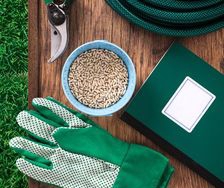

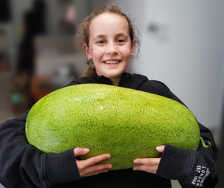
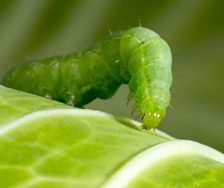
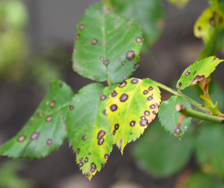
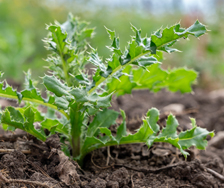











Share
Share this article on social media